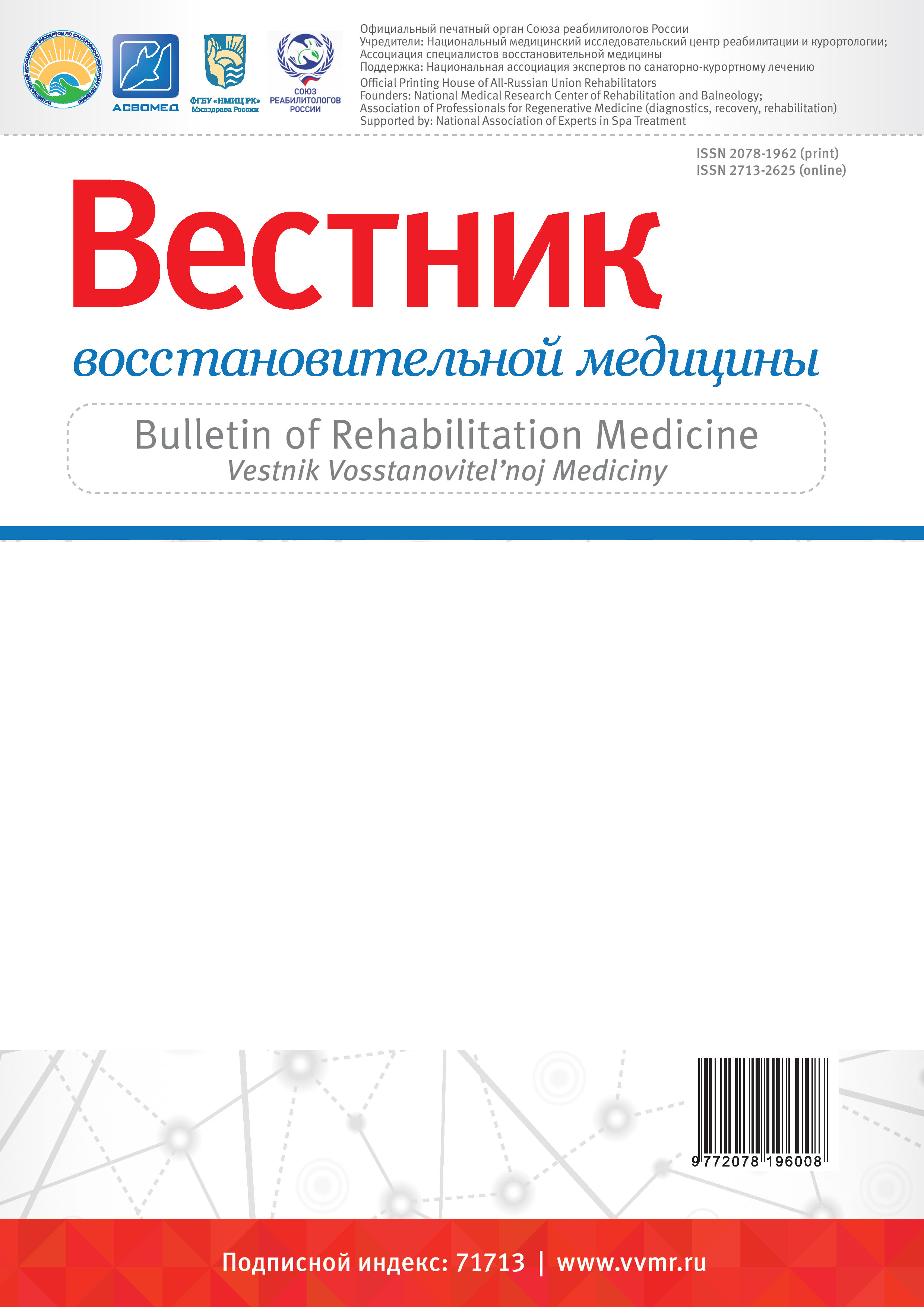INTRODUCTION. Effective kinesitherapy of peripheral and central paralysis of the mimic, masticatory, lingual and pharyngeal muscles requires in-depth study of the features of the cooperative work of these muscles in the norm and in pathology. AIM. To acquaint rehabilitation specialists with motor automatisms of the brachiofacial area and show the principles of their practical use. MATERIAL AND METHODS. We studied more than 70 literature sources on involuntary activity of the maxillofacial region and adjacent regions muscles as well as we summarized our own experience in rehabilitation of patients with peripheral facial neuropathies and with bulbar and pseudobulbar syndromes RESULTS AND DISCUSSION. The study showed that the face, neck, and arm are involved in various mesencephalic-bulbar automatisms, both normal (ontogenetic and psychosomatic synkinesia, postural-ocular and postural-mandibular reflexes) and pathological (trunk eye-facial synkinesia, oral automatic reflexes), much more closely than other body parts. All of them, with the exception of facial hyperkinesias, may serve as a basis for optimizing kinesitherapy methods for movement disorders of the brachiofacial region. CONCLUSION. The face, neck, and hand are closely involved in a variety of stem and subcortical automatisms. The better the physical therapist is familiar with the features of the existing or potentially available to the patient reflex activity in the part of the body being rehabilitated, the more effective the rehabilitation treatment will be. The face, neck and arm are closely involved in a variety of stem and subcortical automorphisms. The better a doctor or an instructor in exercise therapy is acquainted with the reflex activity present or potentially available in the part of the body to be rehabilitated, the more effective the rehabilitation treatment will be.
kinesitherapy, bulbar palsy, pseudobulbar palsy, facial nerve, synkinesis, brachiofacial region
1. Bernshteyn N.A. Ocherki po fiziologii dvizheniy i fiziologii aktivnosti. Moskva. Medicina. 1966: 349 s.
2. Petrov K.B., Ivonina N.A., Mitichkina T.V. Osnovnye etapy razvitiya kineziterapii. Vestnik vosstanovitel'noy mediciny. 2020; 6(100): 100-107. https://doi.org/10.38025/2078-1962-2020-100-6-100-107
3. Petrov K.B. Opyt primeneniya original'nogo kompleksa lechebnoy fizkul'tury i elektrostimulyacii pri reabilitacii bol'nogo s psevdobul'barnym paralichom. Vestnik vosstanovitel'noy mediciny. 2021; 1(20): 84-95. https://doi.org/10.38025/2078-1962-2021-20-1-84-95
4. Han M.A, Chubarova A.I., Degtyareva M.G., Kuyanceva L.V., Tulenkova T.E., Mikitchenko N. A. Tehnologii medicinskoy reabilitacii i abilitacii detey s posledstviyami perinatal'noy patologii nervnoy sistemy. Vestnik vosstanovitel'noy mediciny. 2018; 3(85): 53-57
5. Arhipov B.A. Sinkinezii. Dostupna na: http://sensint.ru/articles/baarhipov-2002g-sinkinezii (data obrascheniya 05.04.2020)
6. Oral and Maxillofacial Medicine (Third Edition). The Basis of Diagnosis and Treatment. 2013. Available at: https://www.sciencedirect.com/book/9780702049484/oral-and-maxillofacial-medicine (accessed 25.04.2022).
7. Mohov D.E., Babkin O.A. Rol' propriorecepcii glazodvigatel'nyh myshc v podderzhanii ravnovesiya i raspredelenii myshechnogo tonusa. Manual'naya terapiya. 2010; 2(38): 52-58.
8. Šidlauskienė M., Smailienė D., Lopatienė K., Čekanauskas E., Pribuišienė R., Šidlauskas M. Relationships between Malocclusion, Body Posture, and Nasopharyngeal Pathology in Pre-Orthodontic Children. Medical Science Monitor. 2015; (21): 1765-1773. https://doi.org/10.12659/MSM.893395
9. Sambataro S., Cervino G., Bocchieri S., La Bruna R., Cicciù M. TMJ Dysfunctions Systemic Implications and Postural Assessments: A Review of Recent Literature. Journal of Functional Morphology and Kinesiology. 2019; 3(4): 58-70. https://doi.org/10.3390/jfmk4030058
10. Prochazkova E., Kret M.E. Connecting minds and sharing emotions through mimicry: A neurocognitive model of emotional contagion. Neuroscience & Biobehavioral Reviews. 2017; (80): 99-114. https://doi.org/10.1016/j.neubiorev.2017.05.013
11. Hastings M.E., Tangney J.P., Stuewig J. Psychopathy and identification of facial expressions of emotion. Personality and Individual Differences. 2008; 7(44): 1474-1483. https://doi.org/10.1016/j.paid.2008.01.004
12. Verbenko V.A., Ganzin I.V., Korobov A.A., Mel'nikov V.A., Rodriges-Aniya V.L., Samohvalov V.P., Hrennikov O.V. Osnovy psihiatrii. Simferopol'. 2000: 542 s.
13. McDaniel W.W., Brar B., Srirama M., Shaikh S., Kaur A.J. Prevalence of Veraguth's eyelid folds during depression in different ethnic groups. The Journal of Nervous and Mental Disease. 2004; 10(192): 705-707. https://doi.org/10.1097/01.nmd.0000142504.70087.fb
14. Mihaylenko A.A., Litvinenko I.V., Odinak M.M., Cygan N.V., Dynin P.S. M.I. Astvacaturov - osnovopolozhnik biogeneticheskoy koncepcii v otechestvennoy klinicheskoy nevrologii (k 140-letiyu so dnya rozhdeniya). Vestnik Rossiyskoy voenno-medicinskoy akademii. 2018; 3(63): 261-266.
15. Nakamura K., Toda N., Sakamaki K., Kashima K., Takeda N. Biofeedback rehabilitation for prevention of synkinesis after facial palsy. Otolaryngology - Head and Neck Surgery. 2003;128(4): 539-43.
16. Bogolepov N.K., Rastvorova A.A. Okulo-lingval'naya i lingvo-platizmal'naya sinkinezii i ih lokal'no-diagnosticheskoe znachenie. Tezisy dokladov 21-y nauchnoy sessii Ukrainskogo psihonevrologicheskogo instituta. Har'kov. 1961: 10-11
17. Douglas E.H., Andrew E.B. Oculo-Auricular Synkinesia Post Bell's Palsy Causing Unilateral Wilson's Phenomenon. Movement Disorders Clinical Practice. 2020; 5(7): 564-566. https://doi.org/10.1002/mdc3.12973
18. Rayana N.B., Hadj Hamida F.B., Touzani F., Chahed N., Knani L., Krifa F., Yakoubi S., Mahjoub H. Oculopalpebral and facial synkinesis associated with ptosis: epidemiological, clinical, and therapeutic features. Journal Français d'Ophtalmologie. 2011; 2(34): 95-107. https://doi.org/10.1016/j.jfo.2010.10.009
19. Schott J.M., Rossor M.N. The grasp and other primitive reflexes. Journal of Neurology, Neurosurgery & Psychiatry. 2003;5 (74): 558-60. https://doi.org/10.1136/jnnp.74.5.558
20. Nuuttila S., Eklund M., Joutsa J. et al. Diagnostic accuracy of glabellar tap sign for Parkinson’s disease. Journal of Neural Transmission. 2021; 10(128): 1655-1661. https://doi.org/10.1007/s00702-021-02391-3






